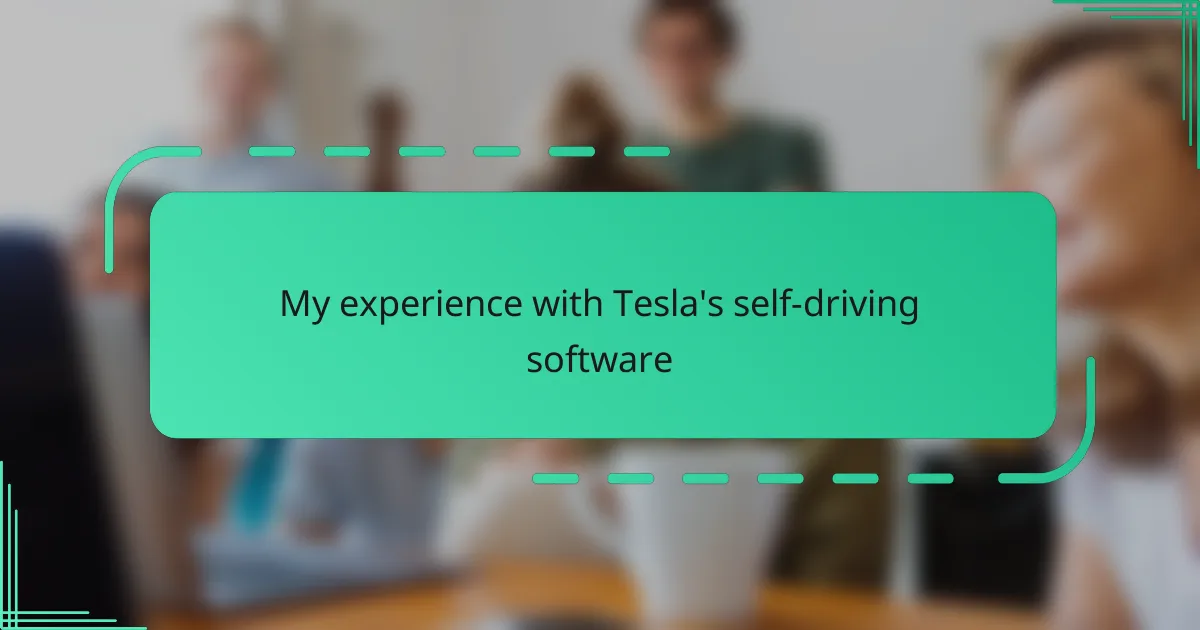Key takeaways
- Tesla’s self-driving technology offers impressive convenience, particularly on highways, but requires active driver supervision in complex traffic situations.
- Key features like Traffic-Aware Cruise Control and Autosteer enhance the driving experience but come with occasional hesitations and unpredictability.
- Regular software updates improve the system’s performance and address challenges such as misinterpretation of road signs.
- Trust in the technology is essential, yet maintaining vigilance at all times is crucial for safety.
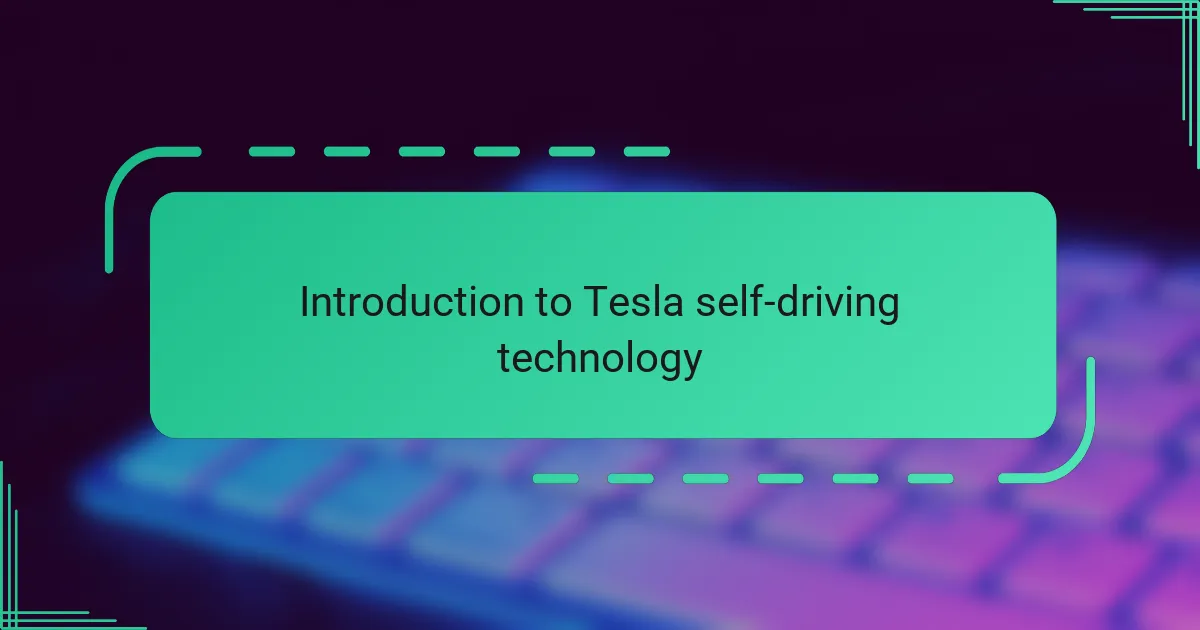
Introduction to Tesla self-driving technology
Tesla’s self-driving technology is an ambitious attempt to redefine how we interact with cars, blending AI with advanced sensors to offer semi-autonomous driving. From my own hours behind the wheel using this system, I found it both thrilling and slightly unnerving—the promise of freedom mixed with moments of uncertainty. It’s clear that while impressive, the technology still demands cautious attention.
| Aspect | My Experience |
|---|---|
| Technology Used | AI, cameras, radar, ultrasonic sensors – the car “sees” its surroundings in real time. |
| Driving Mode | Mostly hands-off on highways, but hands-on in complex traffic situations. |
| Reliability | Generally responsive, though occasional hesitations made me double-check the road. |
| Emotional Impact | Excitement for innovation coupled with the need to stay vigilant. |
| Safety Features | Automatic braking and lane-keeping felt reassuring. |
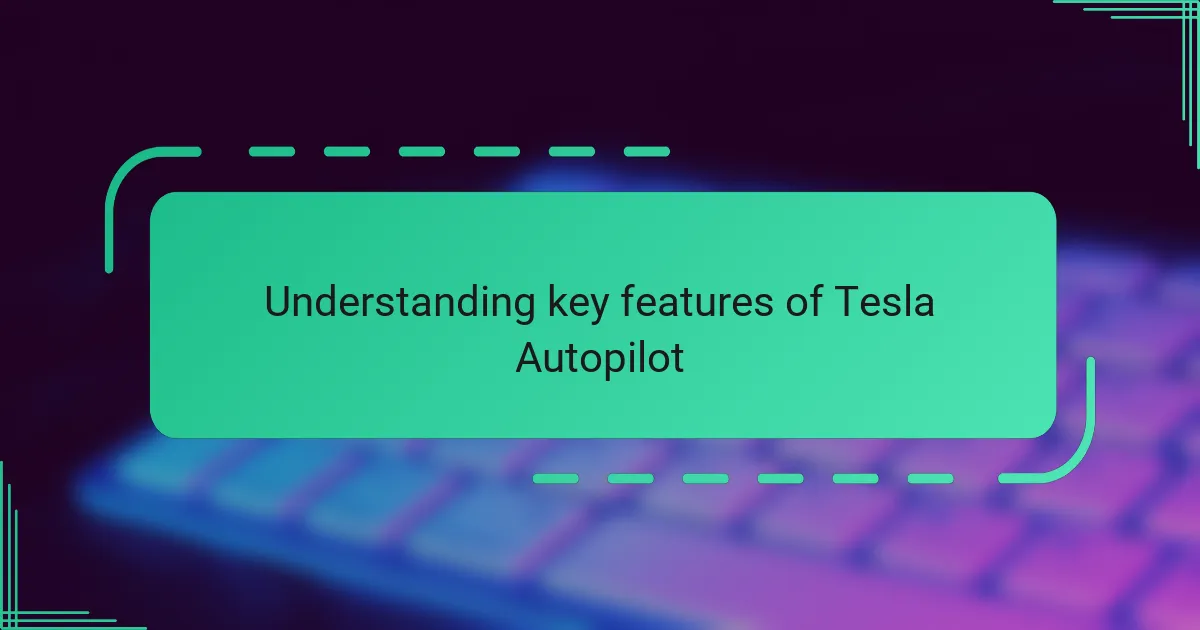
Understanding key features of Tesla Autopilot
Tesla Autopilot offers a blend of convenience and cutting-edge technology that initially felt like a glimpse into the future rather than my everyday driving experience. When I first engaged Autopilot on a long stretch of highway, the system’s smooth lane-keeping and adaptive cruise control left me impressed, though I remained alert, knowing it’s not fully autonomous.
Some of the key features that stood out to me include:
– Traffic-Aware Cruise Control: Adjusts the car’s speed to maintain a safe distance from the vehicle ahead, making stop-and-go traffic far less stressful.
– Autosteer: Keeps the car centered in its lane with subtle steering corrections that feel surprisingly natural.
– Automatic Lane Changes: With a simple signal, the car changes lanes automatically, which saved me from several tedious maneuvers during my commute.
– Summon Feature: Allows the car to park itself or come to me in tight spots, which, I must admit, felt like having my own personal valet.
– Navigate on Autopilot: Guides the vehicle from highway on-ramp to off-ramp, including interchanges and overtaking slower cars—this feature made my cross-state drive notably less exhausting.
These features combined introduced a new layer of trust and convenience, although I always had a bit of nervous excitement behind the wheel.
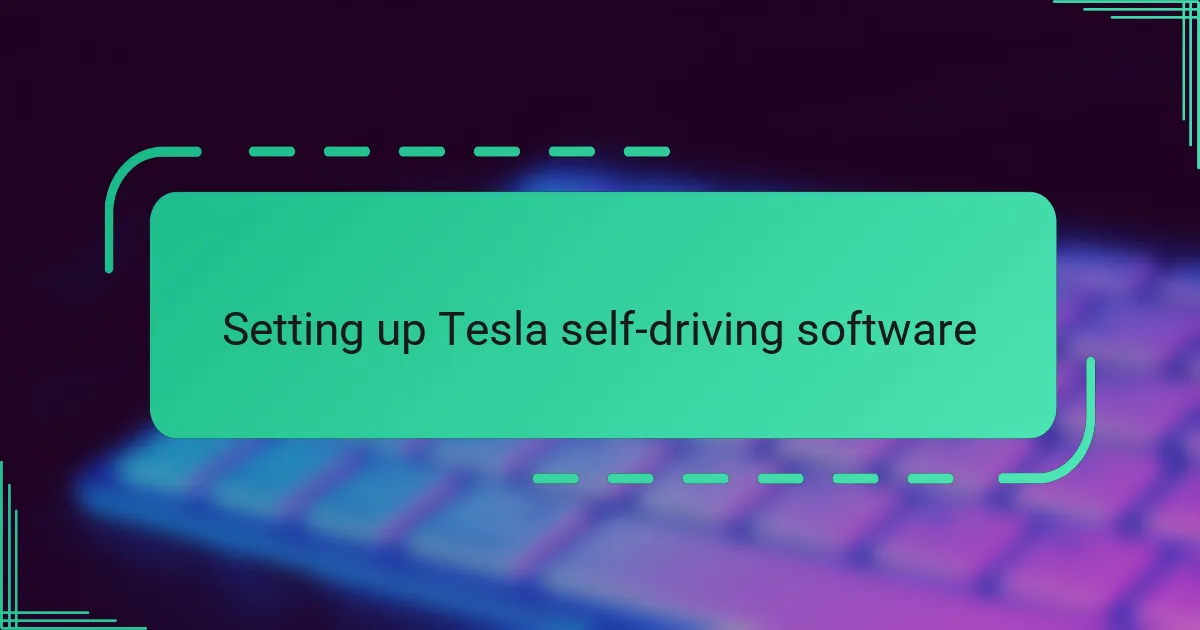
Setting up Tesla self-driving software
Setting up Tesla’s self-driving software was surprisingly straightforward, at least at first. When I activated the system through the touchscreen interface, I found the step-by-step prompts clear and easy to follow, which eased any initial nervousness I had about trusting the software on the road.
However, the calibration process took longer than I expected. Watching the cameras and sensors scan my surroundings made me realize how much Tesla’s technology relies on perfect precision, and I felt a mix of awe and slight anxiety about the car interpreting real-world complexity accurately.
Here’s what the setup involved for me:
– Updating the car’s software to the latest version
– Scanning and calibrating all eight cameras around the vehicle
– Agreeing to Tesla’s terms and safety warnings on the touchscreen
– Configuring driver-assist settings like speed limits and lane preferences
– Performing a short test drive to let the system map road conditions in real time
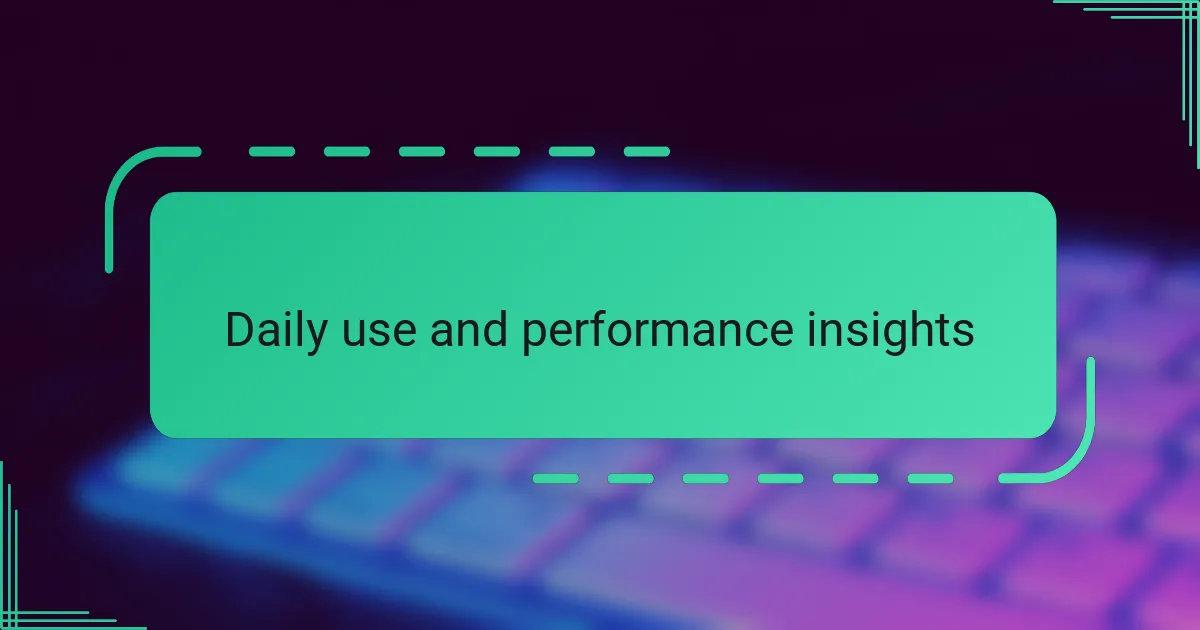
Daily use and performance insights
Daily use of Tesla’s self-driving software has been a mix of convenience and surprises. I found that while it handles highway cruising smoothly, city driving sometimes requires extra attention, especially in complex traffic conditions. The system’s responsiveness gave me confidence but also kept me on alert, reminding me it’s not completely hands-off yet.
Performance-wise, the software excels in maintaining lane position and managing speed relative to traffic. However, I noticed occasional hesitations at unexpected road changes, which made me appreciate the need for driver supervision. Overall, it feels like a glimpse of the future, though not without its quirks.
| Feature | Experience |
|---|---|
| Highway Driving | Smooth and reliable, minimal intervention needed |
| City Driving | Challenging, requires more driver attention |
| Lane Keeping | Consistently accurate and stable |
| Speed Adjustment | Adaptive but sometimes slow to react |
| Driver Alerts | Helpful and timely, ensuring safety |
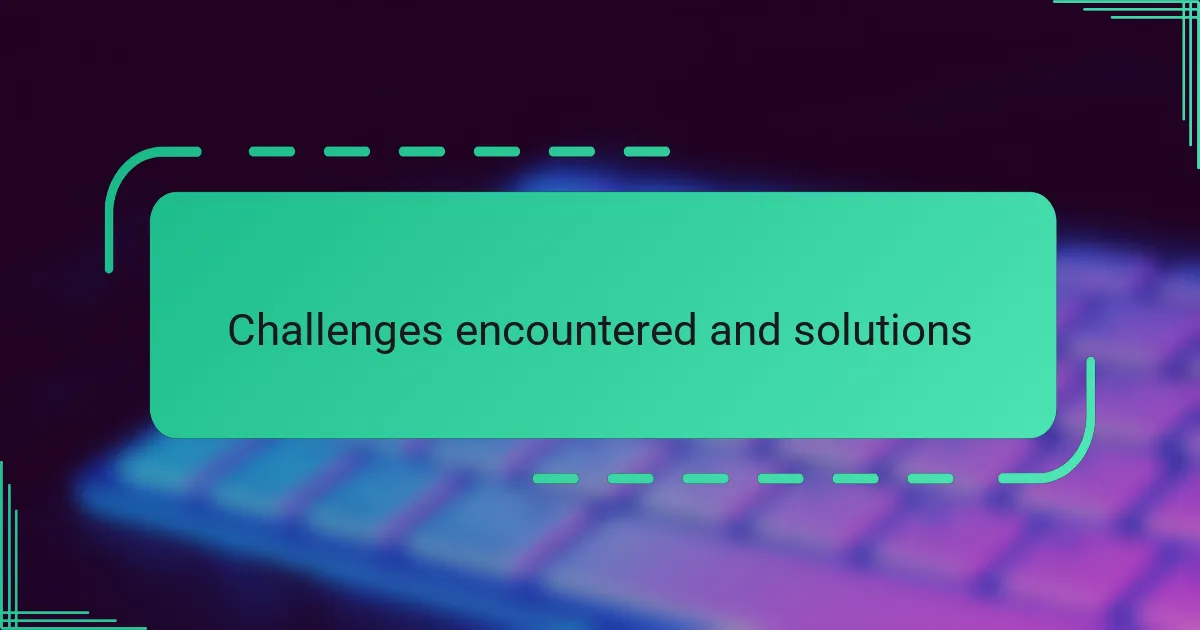
Challenges encountered and solutions
Challenges with Tesla’s self-driving software mainly stemmed from occasional misinterpretation of road signs and unpredictable pedestrian behavior. I remember feeling a mix of awe and frustration when the car hesitated at a perfectly clear yield sign, which made me question the software’s judgment. However, Tesla’s frequent over-the-air updates helped gradually smooth out these quirks, showing promise in its evolving capabilities.
| Challenge | Solution |
|---|---|
| Misinterpreting road signs | Software updates improving recognition algorithms |
| Unpredictable pedestrian behavior | Enhanced sensor calibration and machine learning models |
| Occasional hesitation at simple traffic situations | Continuous data gathering and driver feedback integration |
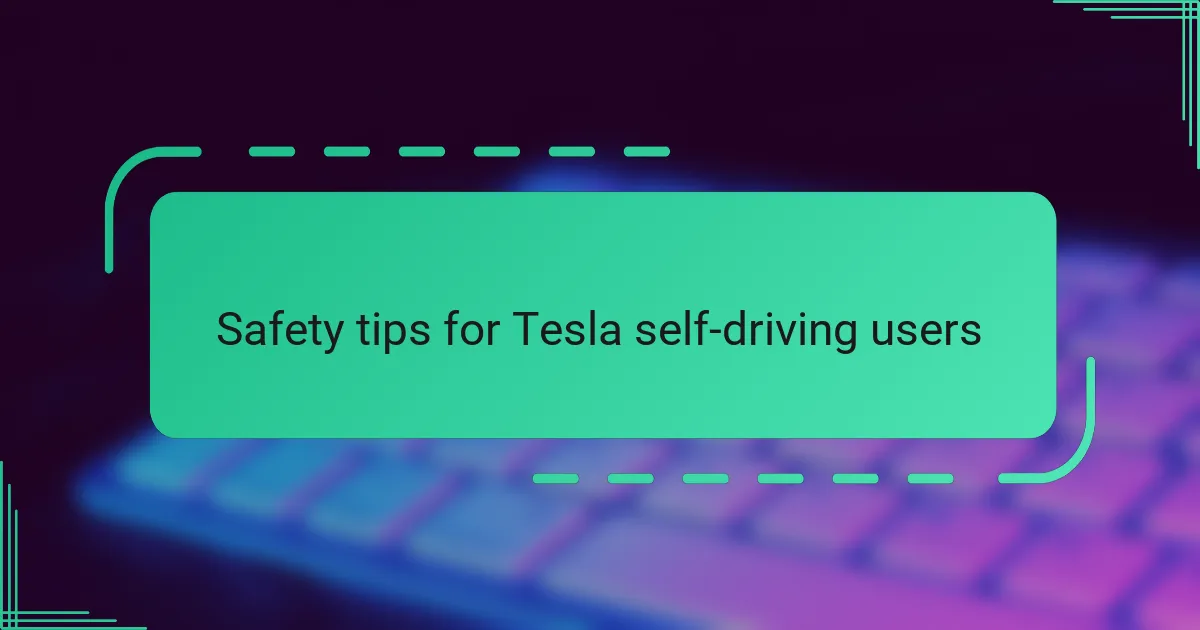
Safety tips for Tesla self-driving users
Using Tesla’s self-driving software taught me one crucial thing: never fully let go of the wheel. Even when Autopilot feels confident, keeping your hands lightly on the steering wheel and eyes on the road is non-negotiable. Have I ever felt complacent? Sure—but those moments quickly remind me why vigilance matters most.
Another tip I swear by is regularly reviewing the system’s alerts and nudges without distraction. Tesla’s reminders aren’t just beep noises; they’re gentle warnings that the software needs a bit of human backup. Trust me, ignoring these can turn what feels like a smooth ride into a tense situation in seconds.
Finally, always stay updated with the latest software releases. I recall how an update fixed some of the hesitation problems that initially made me nervous at tricky intersections. These updates show Tesla’s commitment to safety—but they only work if you keep your car’s software current and remain engaged behind the wheel.
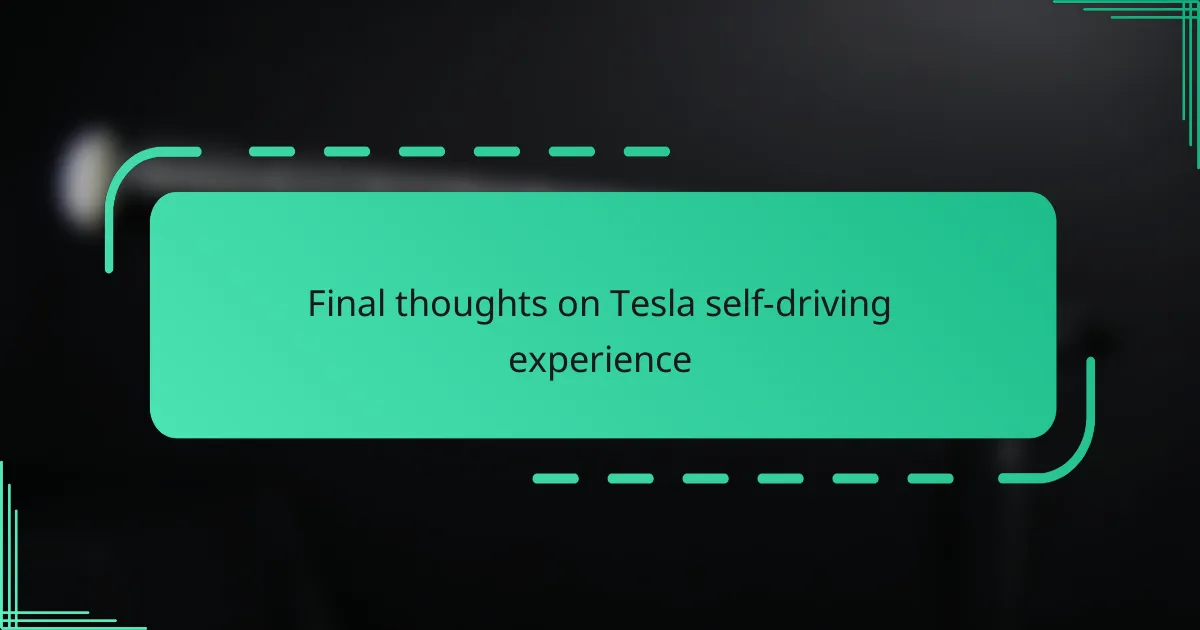
Final thoughts on Tesla self-driving experience
Using Tesla’s self-driving software felt like stepping into the future, yet it came with its share of surprises. I found moments of sheer convenience when the car smoothly navigated traffic, but there were also times I felt a pang of anxiety, especially in complex urban settings where the system hesitated or behaved unpredictably. These experiences made me appreciate how far the technology has come, while also reminding me that it’s far from perfect.
One particular drive on a busy highway stood out—I relaxed more than I expected, trusting the software to handle lane changes and speed adjustments. But when the system suddenly slowed without clear reason, my confidence wavered. This push-and-pull between trust and caution shaped my overall view.
Key takeaways from my Tesla self-driving experience:
– Highly effective in stable, predictable conditions like highways.
– Occasional hesitation or erratic behavior in complex city environments.
– Provides great convenience but requires constant driver attention.
– Inspires excitement about the future of autonomous driving.
– Highlights the current limitations and need for ongoing improvements.
